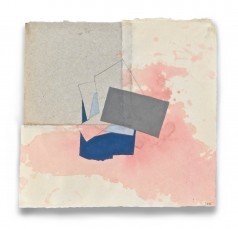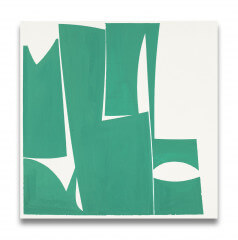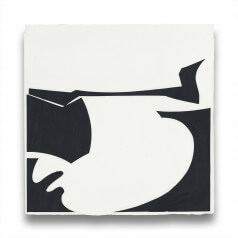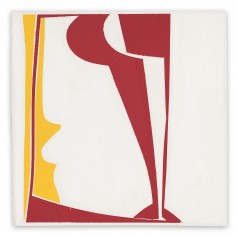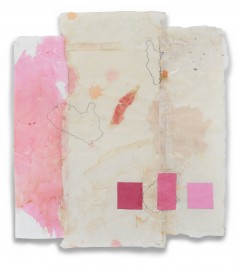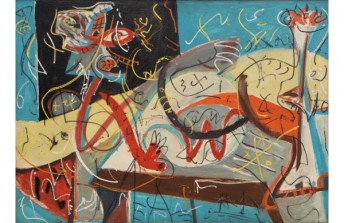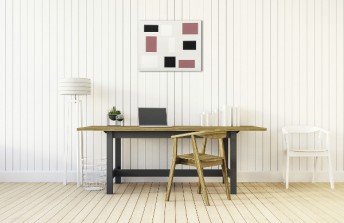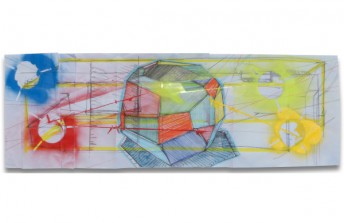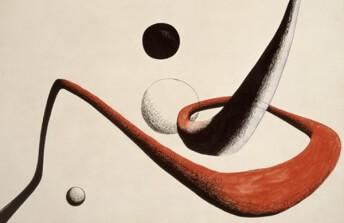A Brief History of Gouache in Abstract Art
Aug 15, 2016
Can paint speak? In 1964, Canadian philosopher Herbert Marshall McLuhan coined the now-famous phrase, “The medium is the message.” If McLuhan was correct, that means that whatever is communicated through a painting is primarily expressed by the paint. It begs the question, as one of painting’s oldest mediums, what must gouache (pronounced “gwash”) have to say? Its ancestral roots, which lie in mediums like egg tempera, can be traced back at least as far as ancient Greece. It possesses unique material qualities that make it unlike any other type of paint. One of the easiest mediums to work with, it is also considered by many painters to be the most complicated to master. Prized for being water-soluble like watercolors, its most essential quality is that of being opaque, like oils. So what exactly is the message of gouache? It is unclear.
How to Make Paint
The basic recipe for paint is simple. But then it would have to be, wouldn’t it? The world’s oldest paintings, currently considered to be those on the walls of Cueva de El Castillo in Cantabria, Spain, date back more than 40,000 years. Suffice to say that whatever our cave dwelling ancestors were up to, it was rustic. Paint is no exception. It essentially consists of two ingredients: a pigment and a binder. A pigment is a substance that interacts with light resulting in the appearance of color. A binder is a liquid that suspends the pigment, allowing it to be spread over a surface where it can attach itself and dry.
The simplest paint making method is to combine a natural pigment with a natural binder. For example, if you mix soil with tree sap, that’s paint; and by the way, soil-sap paint may last longer than you think. The 10,000-year old, pre-historic hand paintings in Argentina’s Cave of the Hands were probably painted with something similar. They contain at least four colors: red, black, yellow and white. The red most likely came from some combination of iron oxide and clay. The black is likely charcoal from burnt wood. The yellow came from a mineral called goethite. The white was probably calcium carbonate, also known as chalk. The binder could have been almost anything: honey, aloe, or even blood.
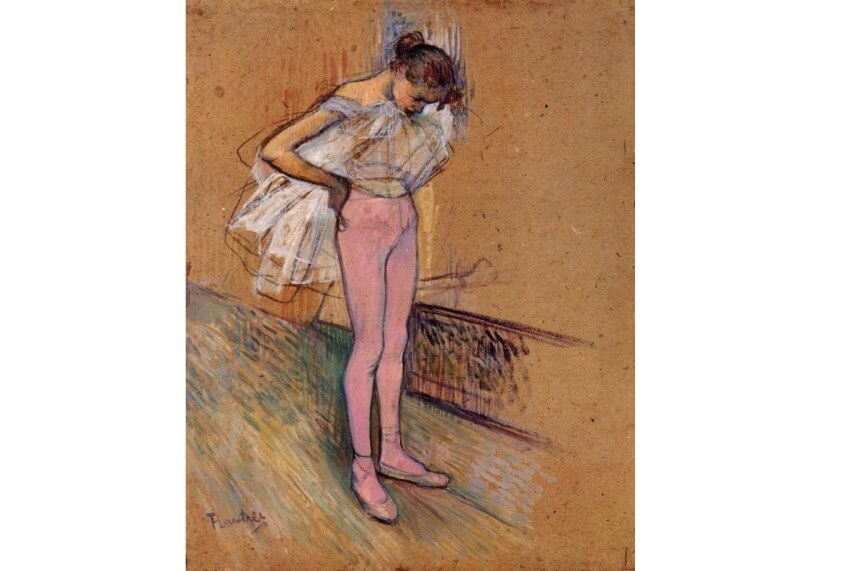
Henri de Toulouse-Lautrec - Dancer Adjusting Her Tights, 1890, Gouache on board
Medium Ground
Since pre-historic times paint making has become more complex. Every conceivable binder has been analyzed. Countless additional ingredients have been tested in search of various precious aesthetic qualities. Today’s artists enjoy a staggering range of paints in a nearly endless array of colors. What sets each one aside is its binder. Oil paints use oil as a binder. They are opaque, they don’t mix with water, they can be amassed in thick layers, they dry slowly, and once dry, they cannot be altered. Watercolors use a water-soluble binder like gum arabic. Their transparency allows under layers of paint to remain visible, they dry quickly, but they can be reactivated with the addition of more water, allowing the picture to be changed after it dries. Modern paints like acrylics and enamels use synthetic binders. They are opaque, they go on flat, they are resilient, and they dry quickly but cannot be altered once they’re dry.
What makes gouache special is that it occupies a sort of middle ground among mediums. It possesses the most desirable qualities of the other types of paint. It is made from a water-soluble binder, so like watercolors it dries quickly but can be reactivated with water and altered after it dries. And since the binder has chalk added to it, gouache is opaque, like oil paint. In short, gouache is an easy to use, vivid paint that dries fast and can be changed later if you don’t like what you did.
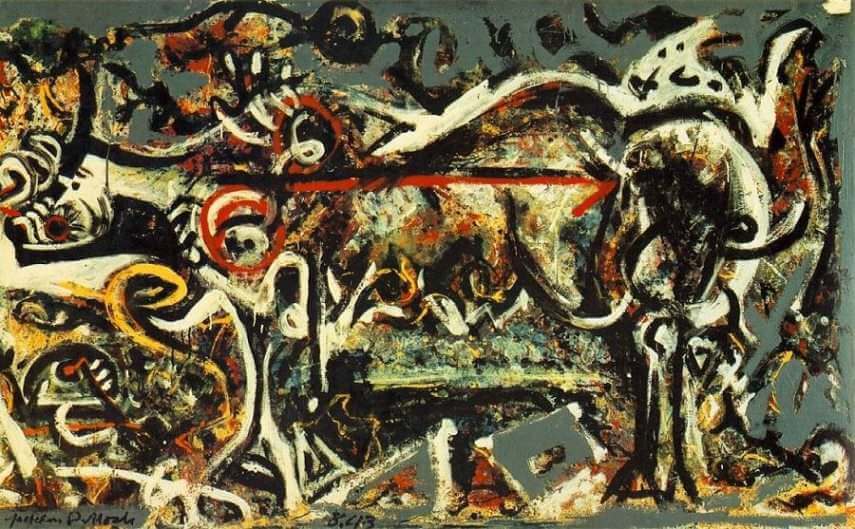
Jackson Pollock - The She Wolf, 1943, oil, gouache, and plaster on canvas, 41 7/8 x 67in (106.4 x 170.2 cm), © 2018 Pollock-Krasner Foundation / Artists Rights Society (ARS), New York
Gouache Impressions
The earliest gouache-like paints were temperas, made in ancient Greece and Egypt. They used egg yolks as a binder. The glaze from the egg yolk created a semi-opaque, matte finish. Tempera was the primary type of paint used in Europe until oil paints became more popular in the 16th Century. Many ancient tempura paintings in existence today are more than 1000 years old and still maintain their brilliance and structural integrity. Modern gouache, however, didn’t come into favor until the Impressionists discovered its value in the 19th Century.
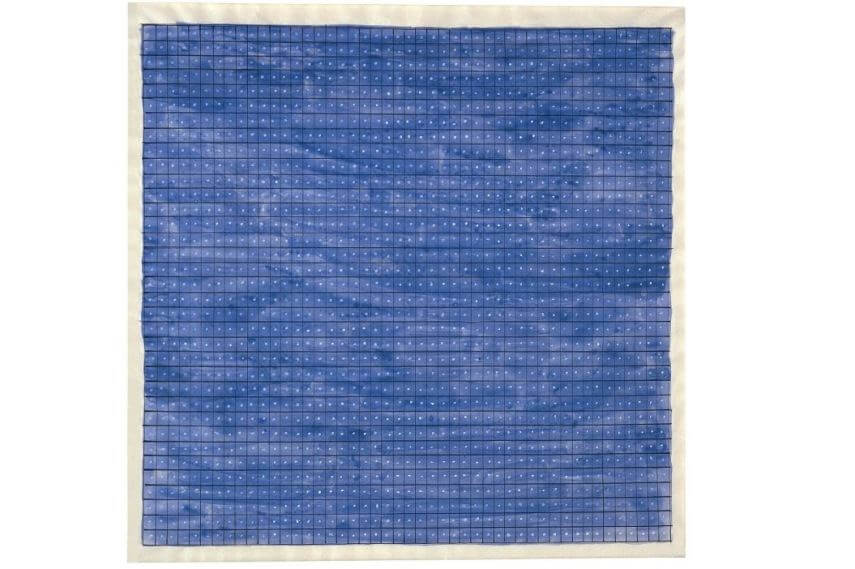
Agnes Martin - Untitled, 1965, watercolor, ink and gouache on paper, © Estate of Agnes Martin/DACS, London, 2015
Impressionist painters helped popularize “plein air,” or open-air painting. They wanted to get out of the studio and do their painting outside, immersed in their subject, so as to fully capture the qualities of natural light. They needed a paint that could convey brilliant, vivid color, but could also dry quickly and be easy to handle. Oil paints took a long time to dry and were high maintenance. So by adding chalky white paint to their watercolors, they created an opaque, vivid, quick-drying paint that could easily be used anywhere. By the late 1900s, Post-Impressionist painters such as Henri de Toulouse-Lautrec had fully embraced gouache as a medium that allowed them to work quickly while still capturing luminosity and the other qualities of oil paint.
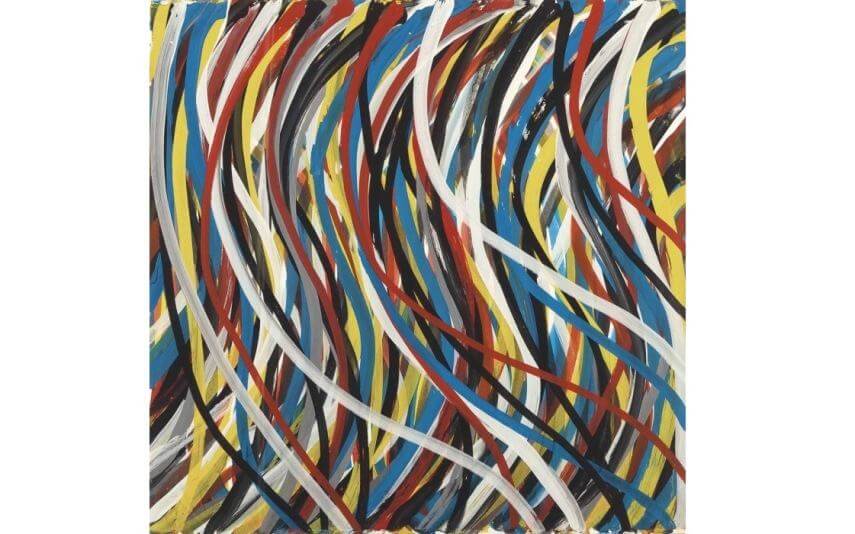
Sol LeWitt - Curvy Brushstrokes, 1995, gouache on paper, Gouache on paper. 22½ x 22½ in (57.1 x 57.1 cm), © Sol LeWitt
Gouache and Abstraction
Almost every Modernist abstract painter of note has at one time or another experimented with gouache. Many of the 20th Century’s most influential abstractionists used gouache before they arrived at the techniques that eventually defined their oeuvres. Mark Rothko made gouache paintings before he discovered his unique style of color field painting. Helen Frankenthaler painted with gouache before discovering her soak-stain technique. Even Jackson Pollock, before he transitioned into making the iconic gestural drips paintings that made him famous, experimented with gouache.
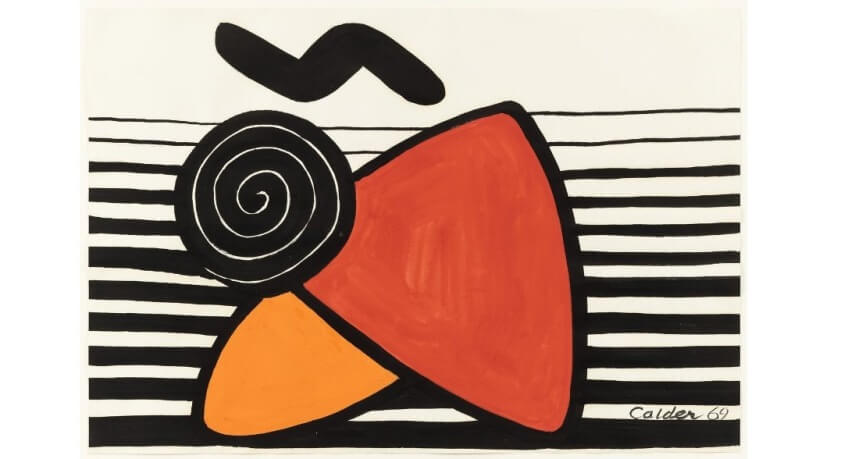
Alexander Calder - Untitled, 1969, gouache on paper, 29 1/2 x 43 3/8in (74.9 x 110 cm), © 2018 Calder Foundation, New York / Artists Rights Society (ARS), New York
Agnes Martin used a tremendous range of mediums in her paintings, but found the unique qualities of gouache to be of particular value since it can easily be drawn on with graphite or ink after it dries. And Sol LeWitt, one of the most influential conceptual artists of the 20th Century, used gouache extensively for his paintings and prints, famously once making more than 250 gouache paintings in a single year.
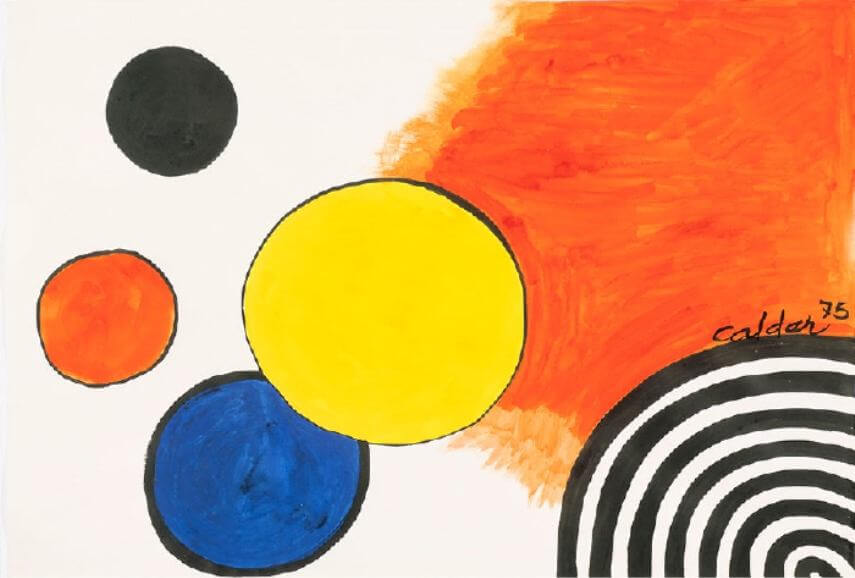
Alexander Calder - Occident, 1975, gouache and ink on paper, © 2018 Calder Foundation, New York/Artists Rights Society (ARS), New York
Modernist Gouache Masters
Artists as far ranging in style as Georges Mathieu, Fernand Leger and Jean Dubuffet prolifically used gouache as a preferred medium. And one of the most prolific abstract modernist gouache users was Alexander Calder. Although primarily known for his mobiles, throughout his life Calder was also a painter. Most of his most iconic paintings from later in his life were made using gouache on paper.
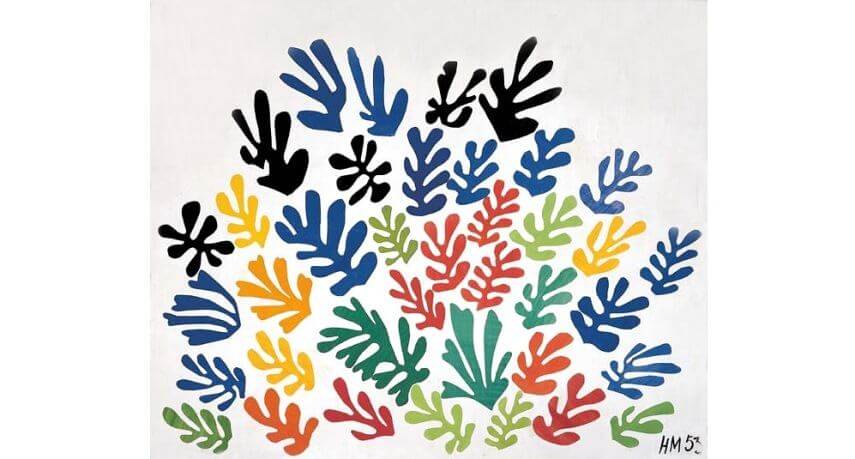
Henri Matisse - La grebe, 1953, gouache on paper, © 2018 Succession H. Matisse/Artists Rights Society (ARS), New York
But without question, the artist who made the biggest contribution to the embrace of gouache as an abstract medium was Henri Matisse. In 1941, at age 71, Matisse was diagnosed with cancer. At the time he was already one of the most accomplished and famous painters alive. He survived his treatment for the disease, but was left physically disabled. He nonetheless enthusiastically re-imagined his practice, initiating what has become known as his cut-out phase. He cut abstracted forms from paper and painted them with gouache, assembling the cut-outs onto a surface like a collage. His cut-outs ranged from small, intimate compositions to room-sized installations. This phase of his career not only changed the nature of his own work, but also challenged the definition of painting and sculpture and inspired generations of abstract artists to come.
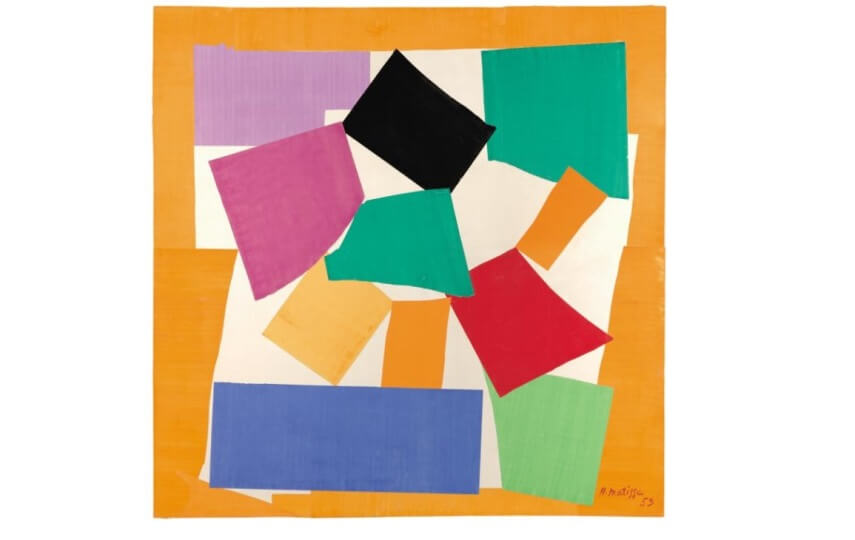
Henri Matisse - The Snail, 1953, gouache on paper mounted on canvas, © 2018 Succession H. Matisse/Artists Rights Society (ARS), New York
Contemporary Abstract Gouache Art
Today the message of gouache as a medium is being translated by a generation of innovative abstract artists like Fieroza Doorsen and Joanne Freeman, both represented by IdeelArt. Doorsen creates intimate abstract works that communicate the qualities of vibrant color, utilitarian simplicity and dynamic range. And Freeman’s energetic, gestural works speak confidently about freedom and play while also expressing the formalist qualities of surface and paint, as well as a connection to historical influences.
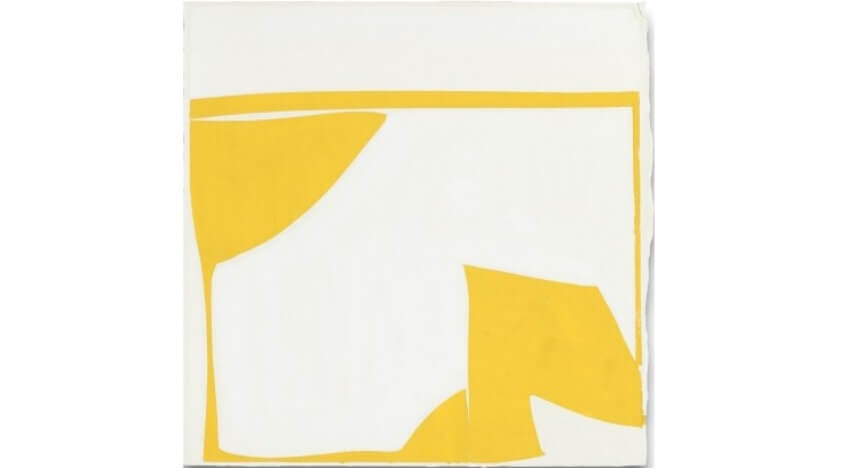
Joanne Freeman - Covers 13-Yellow B, 2014, Gouache on handmade Khadi paper
If a medium’s essential properties truly do communicate with viewers on a subconscious level, the works of these and other abstract gouache artists seem to convey an abundance of messages, such as the importance of vibrancy and color; the existence of a lack of transparency; the power of range; and the vital need for a connection to history. Such particularly contemporary messages might make gouache the perfect medium for our time.
Featured Image: Cave paintings in Argentina’s Cave of the Hands that date back roughly 10,000 years
All images used for illustrative purposes only
By Phillip Barcio
Featured Artists

Joanne Freeman
1954
(USA)American
Jean Feinberg
1948
(USA)American
Ellen Priest
1951
(USA)American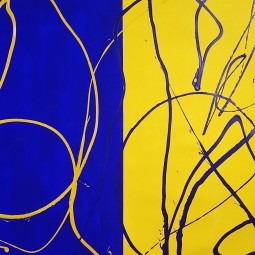
Dana Gordon
1944
(USA)American

